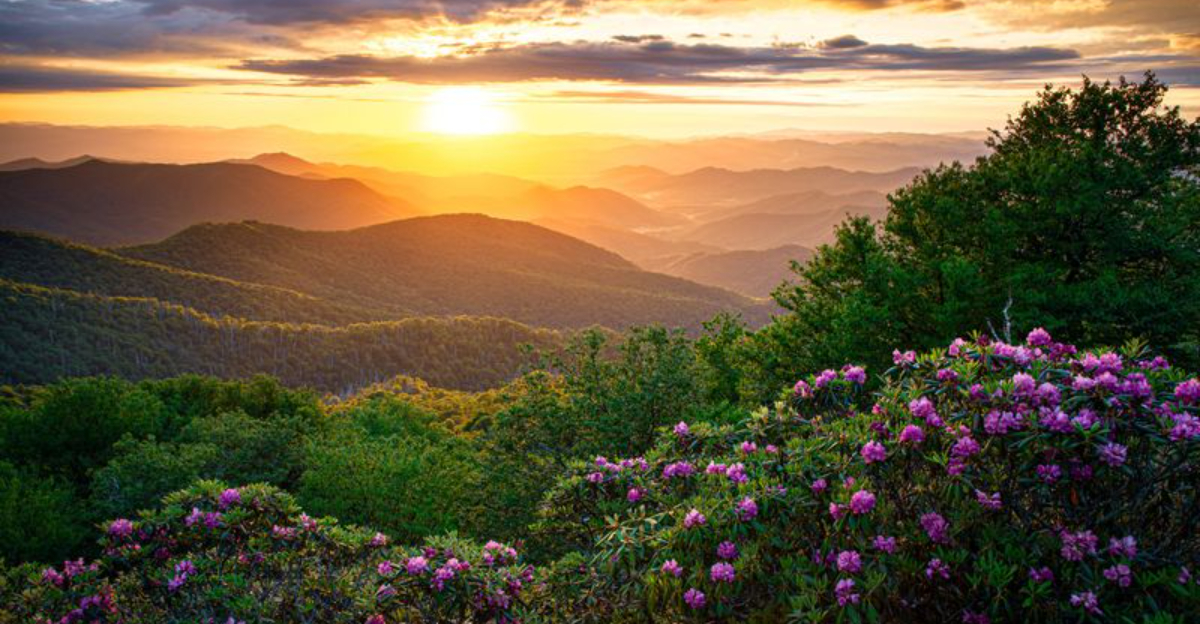A New Era of Travel: Embracing Smaller Destinations
Travelers across the United States are shifting their focus from bustling cities to smaller, more unique destinations that offer rich experiences and a slower pace of life. This trend highlights the growing appeal of towns that blend culture, nature, and authenticity in ways that major metropolitan areas often cannot. Two standout locations leading this movement are Asheville, North Carolina, and Santa Fe, New Mexico. These cities have become beacons for those seeking meaningful travel experiences that go beyond typical tourist spots.
The Charm of Asheville: A Mountain Haven
Nestled within the Blue Ridge Mountains, Asheville has evolved from a quiet mountain town into a vibrant cultural hub that attracts visitors from all over the country. The city’s downtown area is alive with energy, where street performers entertain passersby and artists showcase their work in the River Arts District. Unlike crowded urban centers, Asheville offers a welcoming atmosphere where travelers feel like they’re part of the community rather than just another visitor.
The city’s craft beer scene is one of its most notable features. With more breweries per capita than any other U.S. city, Asheville is a haven for beer enthusiasts. Local breweries such as Wicked Weed Brewing and Highland Brewing Company experiment with unique ingredients, creating flavors that are truly one-of-a-kind. This brewing culture has become an integral part of the city’s identity, serving as both a social gathering place and a reflection of local creativity.
Asheville’s culinary scene also stands out for its emphasis on fresh, locally sourced ingredients. Farm-to-table dining is not just a trend here—it’s a way of life. Chefs maintain close relationships with local farmers and food artisans, ensuring that meals are made with care and quality. Restaurants like Cúrate and Benne on Eagle highlight Appalachian ingredients through innovative global techniques, offering unforgettable dining experiences that reflect the region’s heritage.
Nature lovers will find plenty to explore just outside the city. The Blue Ridge Parkway, known as America’s favorite drive, winds through scenic mountain landscapes, offering access to countless hiking trails. During autumn, the hillsides transform into a breathtaking display of colors, drawing visitors from around the world. The Biltmore Estate, a stunning 250-room château built by George Vanderbilt in the late 1800s, adds a touch of history and grandeur to the area, with its beautifully maintained gardens designed by Frederick Law Olmsted.
Accommodations in Asheville reflect the city’s eclectic personality. Boutique hotels like The Foundry and Kimpton Hotel Arras are housed in restored historic buildings, while bed and breakfasts in Victorian neighborhoods offer intimate, personalized stays. Wellness retreats like Shoji Spa provide a tranquil escape, with private hot tubs overlooking mountain vistas.
What makes Asheville truly special is its genuine, unpretentious character. Despite its growing popularity, the city retains its quirky charm and warm hospitality. Street performers, independent bookstores, and cozy coffee shops create a sense of community where visitors can easily connect with locals. Festivals throughout the year, such as the LEAF Festival and the Sourwood Festival, add to the city’s vibrant cultural scene, offering deeper immersion into its unique spirit.
The Timeless Appeal of Santa Fe
Santa Fe, nestled in the high desert of New Mexico, exudes a golden glow that captivates visitors from the moment they arrive. As the oldest state capital in the U.S., founded in 1610, Santa Fe is a city steeped in history and cultural diversity. Its adobe architecture and vibrant streets reflect centuries of Native American, Spanish, and Anglo influences, creating a unique cultural tapestry that sets it apart from other destinations.
Art is at the heart of Santa Fe’s identity. Canyon Road, a half-mile stretch of galleries, showcases a wide range of artistic expressions, from traditional Southwestern paintings to contemporary installations. The city’s museums, including the Georgia O’Keeffe Museum and SITE Santa Fe, offer world-class exhibits that rival those found in larger cities. Meow Wolf’s House of Eternal Return is a standout attraction, blending art, technology, and imagination in an immersive experience that has become a cultural phenomenon.
Culinary traditions in Santa Fe are deeply rooted in the region’s history. Chile—both red and green—plays a central role in local cuisine, with debates over which variety is superior being a common pastime among residents. Historic eateries like The Shed and modern interpretations at Sazon highlight the distinct flavors of New Mexican cuisine, where Native American, Spanish colonial, and Mexican influences come together in a unique and flavorful way.
The natural beauty surrounding Santa Fe offers endless opportunities for outdoor exploration. With over 300 days of sunshine annually, the city enjoys four distinct seasons and a wealth of recreational activities. From hiking and mountain biking in the summer to skiing at Ski Santa Fe in the winter, there’s something for every season. Desert trails wind through piñon and juniper forests, offering breathtaking views that have inspired artists for generations.
Accommodations in Santa Fe reflect the city’s rich history and distinctive character. Historic hotels like La Fonda on the Plaza occupy buildings with centuries of stories, while luxury resorts like Four Seasons Resort Rancho Encantado provide serene escapes in the foothills. Smaller inns and bed and breakfasts offer intimate stays in traditional adobe structures, complete with hand-carved wooden furniture and kiva fireplaces.
Santa Fe’s calendar is filled with cultural celebrations that honor its diverse heritage. The Santa Fe Indian Market, held annually since 1922, brings together indigenous artists from across North America, while the Santa Fe Opera’s summer season draws opera enthusiasts to its open-air theater. The burning of Zozobra, a 50-foot puppet representing gloom, marks the start of Fiestas de Santa Fe each September, symbolizing the release of worries and hardships.
Perhaps the most compelling aspect of Santa Fe is its quality of light. The crystalline clarity of the desert sun creates a magical atmosphere that has drawn photographers and painters for generations. The interplay of this light with adobe buildings produces a warm glow during sunset, known locally as “the golden hour.” This enchanting ambiance, combined with the city’s walkable scale and welcoming spirit, creates an immersive experience that lingers with visitors long after they’ve left, often prompting them to return time and again.







